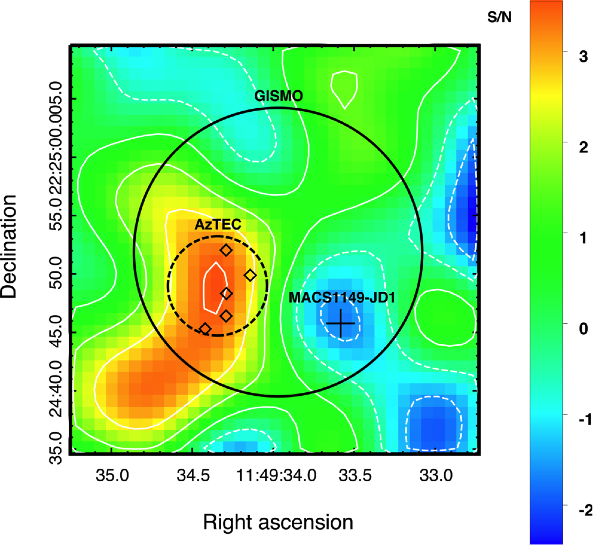The TolTEC Ultra-Deep Galaxy Survey
| Wavelength | Optimal Depth (rms) |
|---|---|
| 1.1 mm | 0.025 mJy/bm |
| 1.4 mm | 0.018 mJy/bm |
| 2.0 mm | 0.012 mJy/bm |
Depth Goal: LIRG limit (LIR>1011L_sun, S1.1~0.025mJy rms).
Areal Coverage: 0.8 sq. deg. depending on mapping speeds
Field Priority:
Why do an Ultra-Deep Survey?
An outstanding question in galaxy evolution is how the Universe builds up metals and dust, a goal that requires observations sensitive to detect infrared emission in typical star-forming galaxies. This survey is designed to provide, for the first time, an unbiased sample of typical luminous infrared galaxies (LIRGs), ultraluminous infrared galaxies (ULIRGs) ranging from less to more luminous and virulent star-forming galaxies, across cosmic time. Over 55,000 such galaxies are expected to be detected in this survey in addition to over 200 strongly lensed and extremely luminous galaxy systems. By targeting legacy cosmology fields such as COSMOS, GOODS, and CANDELS, this survey will readily exploit the available rich database of spectroscopic and high quality photometric redshifts to securely place these galaxies on the cosmic timeline that will allow us to derive dust masses and corresponding stellar masses. The major key question that this survey will address is: What is the history of stellar mass build-up and metal production in massive galaxies during the first 3 Gyr of cosmic time?

(Top) AzTEC 1.1 mm signal-to-noise map obtained with the 32m LMT around the MACS1149-JD1 field (Zavala et al. 2015). The AzTEC detection with 8.5” FWHM is inside the GISMO beam (24.7” FWHM, black solid circle), and rejects a previous identification with a high-redshift galaxy. The black diamonds indicate the position of potential counterparts to the (sub-)mm source. (Bottom) 30”x30” postage stamps of the AzTEC source. The circle represents the 8.5” FWHM beam and position of the AzTEC source likely related to a blend of z=1.3 galaxies within the circle in the HST map. TolTEC on the 50m LMT will have a positional and astrometric accuracy for identification of optical/infrared counterparts better than 1”.
